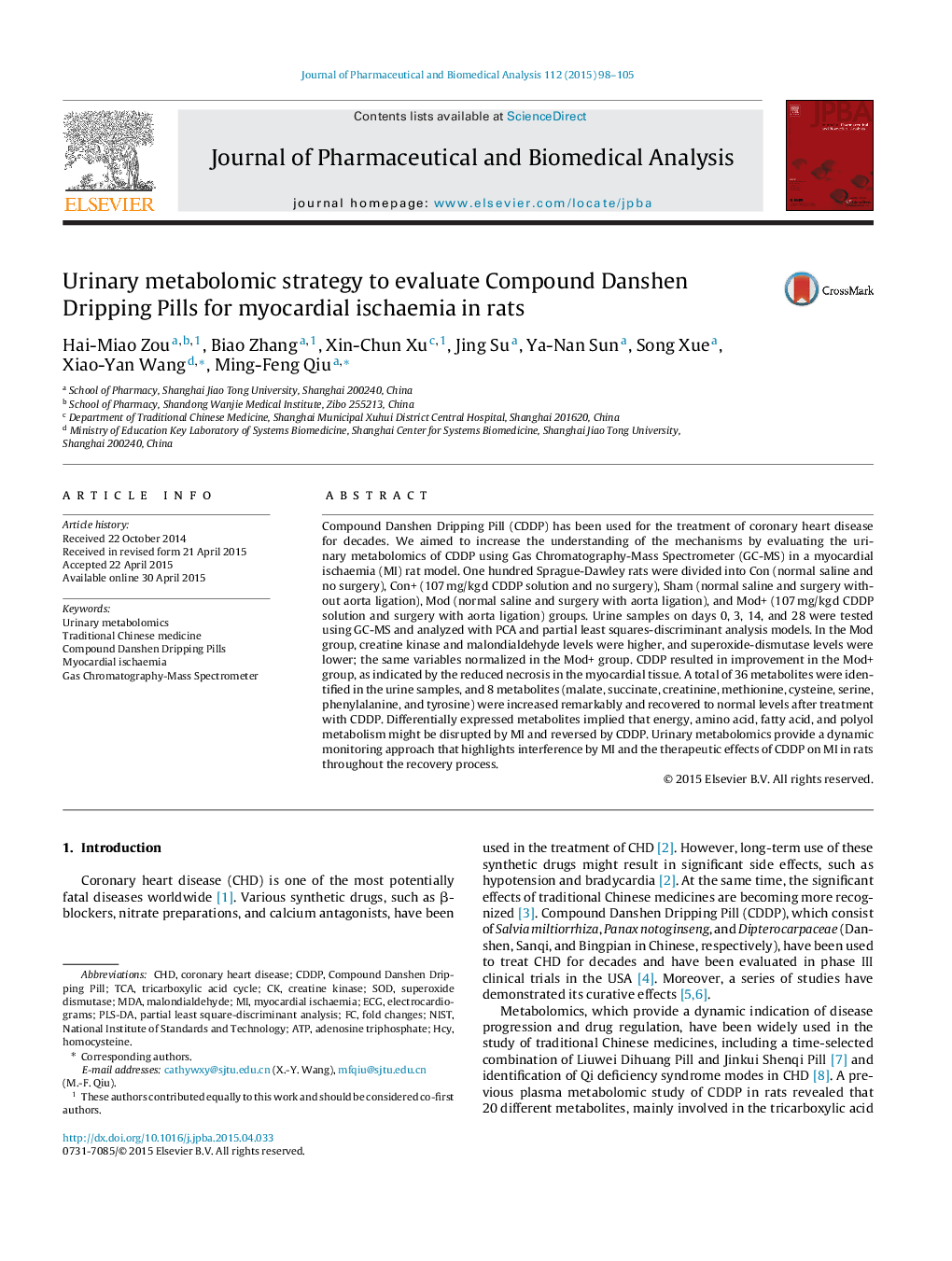| کد مقاله | کد نشریه | سال انتشار | مقاله انگلیسی | نسخه تمام متن |
|---|---|---|---|---|
| 1220730 | 1494623 | 2015 | 8 صفحه PDF | دانلود رایگان |

• Compound Danshen Dripping Pills (CDDPs) are used to treat coronary heart disease.
• Urinary CDDP metabolomics were studied in a rat myocardial ischaemia (MI) model.
• Energy, amino acid, fatty acid, and polyol metabolism might be disrupted by MI.
• CDDPs might reverse the effects of MI on metabolism throughout recovery.
Compound Danshen Dripping Pill (CDDP) has been used for the treatment of coronary heart disease for decades. We aimed to increase the understanding of the mechanisms by evaluating the urinary metabolomics of CDDP using Gas Chromatography-Mass Spectrometer (GC-MS) in a myocardial ischaemia (MI) rat model. One hundred Sprague-Dawley rats were divided into Con (normal saline and no surgery), Con+ (107 mg/kg d CDDP solution and no surgery), Sham (normal saline and surgery without aorta ligation), Mod (normal saline and surgery with aorta ligation), and Mod+ (107 mg/kg d CDDP solution and surgery with aorta ligation) groups. Urine samples on days 0, 3, 14, and 28 were tested using GC-MS and analyzed with PCA and partial least squares-discriminant analysis models. In the Mod group, creatine kinase and malondialdehyde levels were higher, and superoxide-dismutase levels were lower; the same variables normalized in the Mod+ group. CDDP resulted in improvement in the Mod+ group, as indicated by the reduced necrosis in the myocardial tissue. A total of 36 metabolites were identified in the urine samples, and 8 metabolites (malate, succinate, creatinine, methionine, cysteine, serine, phenylalanine, and tyrosine) were increased remarkably and recovered to normal levels after treatment with CDDP. Differentially expressed metabolites implied that energy, amino acid, fatty acid, and polyol metabolism might be disrupted by MI and reversed by CDDP. Urinary metabolomics provide a dynamic monitoring approach that highlights interference by MI and the therapeutic effects of CDDP on MI in rats throughout the recovery process.
Figure optionsDownload as PowerPoint slide
Journal: Journal of Pharmaceutical and Biomedical Analysis - Volume 112, 10 August 2015, Pages 98–105